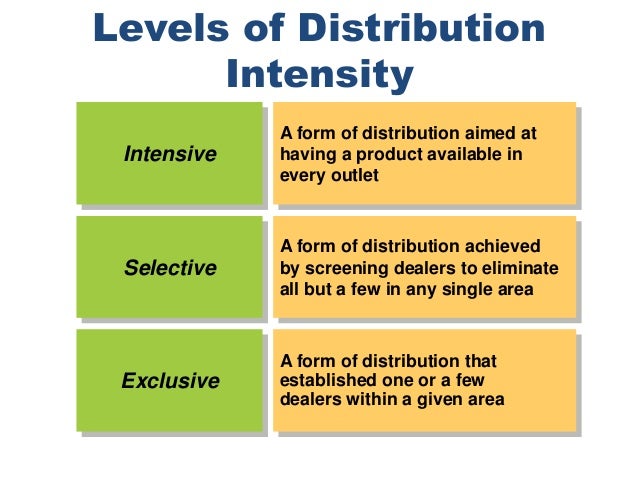
This week we talked about how distribution channels are often a very disregarded, yet key aspect, of a company’s success. Distribution channels are defined as a set of interdependent organizations that eases the transfer of ownership as products move from producer to business user or consumer. There are three main jobs that distribution channels handle for a business. These jobs will never go away, for someone needs to handle them, and it is usually easiest for a marketing channel to take control.
The first job, is known as logistics. Logistics refers to information that needs to be managed for a company. Nowadays, each and every company has information that needs to be managed. That is why so many young adults entering their workforce are finding an SAP certificate as a useful and attractive component of their professional resume. Many employment opportunities are formed by the logistics aspect of a business.
The second job is the facilitating for the company. When you think “wholesale,” you automatically think of cheaper prices. Yes, usually the wholesale price is cheaper, but that is because the products come in bulk. The wholesale price is the price that the product is sold to the retailer for. Whether a person or business decides to invest in wholesale prices or not depends on how much they need, and in what time frame. Derived demand is known as demand for one product in order to satisfy demand for another. For example, wholesale suppliers and supermarkets are designed to attract different segments of the market. BJ’s and Costco, wholesale businesses, exist for smaller businesses. That is their target market. On the other hand, Big Y, Stop and Shop, and Walmart are valuable because they store the inventory for the customers.

Let’s say you are buying toilet paper. You go to a wholesale supplier, like Costco, and are looking for half a dozen rolls of toilet paper. Guess what? They do not have it there. Instead, you have the opportunity to buy sixty roll of papers at Costco, and you can save some money because it is a cheaper price when you buy in bulk. But what are you going to do with the 54 other rolls of toilet paper? That is irritating to store, especially when you were not expecting to buy that many. Of course you can save money, but it is not meant to attract that average adult buying toilet paper for their home. It is to attract business owners who need to buy in bulk as a way to keep the operations of their business running. The alternative is buying from a super market like Big Y or Walmart, where you might pay at a more expensive rate, but you get the amount that you want, for not much of a cost difference, and have the ability to store that amount since that is what you expected, and planned, on purchasing.

For example, we discussed a small restaurant in class. A small, family owned, diner needs to purchase Heinz ketchup bottles for the store. They probably need a max of 30-40 bottles, so who would they call to order them? Do they call Heinz directly? Absolutely not. Heinz is not going to handle an order that small, for it would be a waste of their time and money. They are not going to make that much money off of that order. That is why major companies like Heinz use wholesale to their advantage. They sell in bulk to stores like Costco and BJ’s so that they can simply focus on major orders. Whole sale Clubs are designed to sell that small town diner their bottles of Ketchup when they run out.


The last responsibility of distribution channels is to handle transactional aspects of orders. For example, breaking bulk refers to wholesalers and distribution channels’ ability to pay for bulk orders. Wholesalers usually pay for bulk orders by taking out a loan. When it comes time to pay back that loan, they need to pay what they borrowed, as well as the interest that has accumulated over time. That wholesaler still needs a place to borrow that money from; whether it be the manufacturer or a bank. Businesses need wholesalers to do this to run efficiently. A small business does not need to take out a loan for their order of ketchup bottles. They can go to a wholesaler and get a quantity that is reasonable to their needs and can pay with a credit card. The wholesalers are required to lay out the money or take out a loan for the massive orders from the manufacturers.

Overall, distribution channels help with transporting products and storing those products until consumers purchase them. Marketing channels can generate a lot of savings for companies who utilize this method of distribution and are underrated in the business world.
Next, let’s talk about the importance of the four P’s in a variety of products.
1. Product
2. Place
3. Price
4. Promotion
On Thursday, there were multiple products displayed on the screen, and it was our jobs, in small groups, to determine what type of product each one classified as. On the screen, there was a Jaguar, Septic Service, Twinkies, an Everyday Suit, a Rolex Watch, and a Smart TV. Each product is a different product type, and each one has a different distribution style.
Septic Service
We classified septic service as an unsought product. An unsought product is a product unknown to the potential buyer or a known product that a consumer does not actively seek. Septic service is only really searched for when an emergency arises.


Jaguar
We classified the Jaguar as a specialty product. A specialty product is a particular item for which consumers search extensively and are very reluctant to accept substitutes for. Jaguar tries to make their brand look better and nicer than their competitors. Jaguar builds the brand and builds the car, but does not sell them straight from Jaguar. Ford used to own Jaguar, but no longer does. Car dealerships are independent business owners so that attracts a smaller market. Geographic location tends to be a major factor on whether Jaguars will be dealt there or not. For example, there is a car dealership for Jaguars on Long Island. Why? Because a component of the market segment is there. Jaguar would not have a dealership in Springfield, for not many people would be purchasing that type of luxury in this area. Luxury brands do not want competition like Ford vs. Toyota, so they make it seem exclusive and grander than other dealerships.

Rolex
We also classified Rolex watches as specialty products. Normally, a customer would buy directly from the retailer. Why? Other businesses, besides high end jewelers, will not be able to afford putting a $15,000 watch in the inventory of their store, when their average customer would not be searching for that product, nor be willing to pay that amount at that store. For example, you would not find a Rolex watch in stock at Macy's because their target customer would not buy that, so they do not have it in stock.

Everyday Suits & Smart TVs
Both of these would be considered shopping products. Shopping products are ones that require comparison shopping because it is usually more expensive than a convenience product and is found in fewer stores. A smart TV would also be considered a homogeneous product. Most features of a television are the same, so comparison is usually based on price and reviews. On the other hand, everyday suits are considered to be a heterogeneous product. Its high price is often related to high quality, and the comparison is not about price, but about products themselves. Each suit could be a different color, cut, style etc.


Twinkies
Twinkies are considered to be a convenience product. This is a relatively inexpensive item that merits minimal shopping effort. Twinkies can be found in gas stations, CVS, supermarkets- basically anywhere. Price comparison is not really a factor in this type of product. The product is either there to purchase or it is not, someone won’t go to another store to find Twinkies. It’s kind of like a last minute grab item.

Distribution Intensity
1) Intensive distribution is a form of distribution aimed at having a product available in every outlet where a customer might want to buy it. They make the product available anywhere & everywhere. Twinkies is an example of intensive distribution. Twinkies being available anywhere and everywhere helps the brand.
2) Selective Distribution is a form of distribution achieved by screening dealers to eliminate all but a few in any single area. Everyday suits and smart TVs would be examples of selective distribution.
3) Exclusive distribution is a form of distribution that establishes one or a few dealers within a given area. It takes significant effort to go buy that certain product. Examples are Rolex watches and Jaguars. Jaguar choosing to be exclusive I quite smart. If they were to sell anywhere and everywhere, it would be detrimental to the brand.
Some products are combinations of intensities, it is not always so clear cut. For example, Septic service is seen as selective and exclusive. It is quite complicated. This is a product that looks like it is selective, but behaves like it is exclusive. You seem to be able to find the product in advertisements, but you need to put an effort in to actually purchase that product or service. Once found, comparison of price is not usually a factor since it is usually an emergency situation. This procedure follows for funeral homes as well.
In order to be successful, it is important for companies to stay consistent with the type of distribution intensity they follow. This process all depends on buyer behavior.

No comments:
Post a Comment